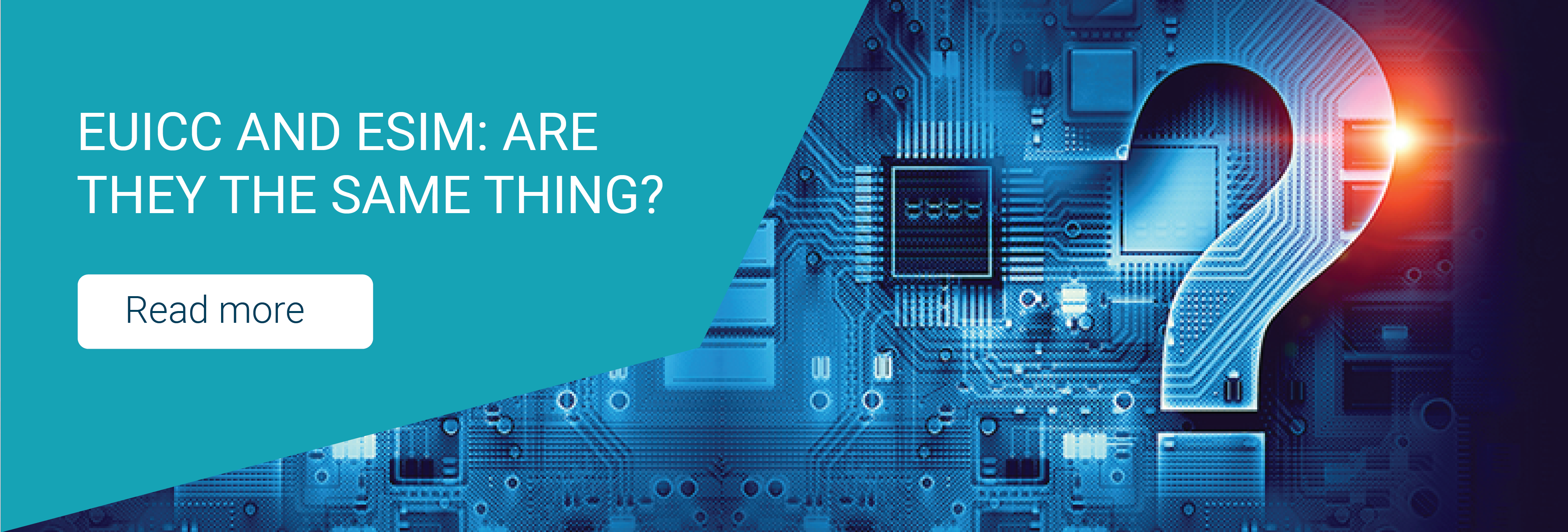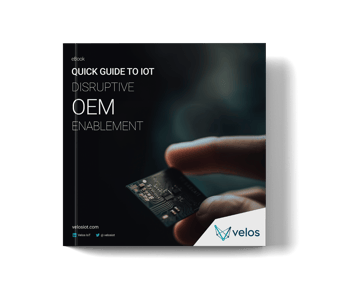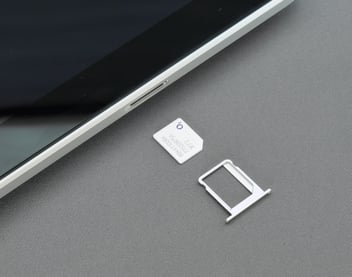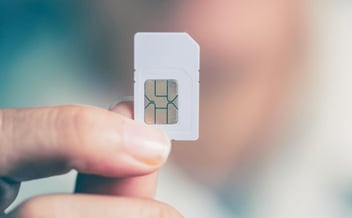

What is eUICC and how does it impact the future of connectivity
eUICC is being hailed as the next evolutionary step for mobile connectivity. It has been generating quite a bit of excitement recently because of the opportunities it gives businesses. In this post, we'll look at a few of the biggest.
What is eUICC?
So, what is eUICC? UICC stands for Universal Integrated Circuit Card, which is part of the functionality within SIM cards that help identify a device on a particular mobile network. Historically, this has been a static element of SIM cards, meaning that each SIM card has one UICC associated with it.
UICC can migrate to another physical SIM, but if it does, it is no longer associated with the original SIM, and no other UICCs can be associated with the new SIM. But with a few exceptions (like multi-IMSI SIMs), SIM cards have worked this way for the last few decades.
However, it may only be the case for a bit longer, as eUICC (an 'embedded' UICC), sometimes referred to as an 'eSIM service', has arrived to shake up the mobile connectivity world.
The Embedded Universal Integrated Circuit Card eliminates the need to migrate profiles between SIMs and opens up many possibilities beyond that, such as hosting multiple UICCs on a single SIM.
The implications of this are fascinating, but the advent of the eUICC presents some new things to consider.
You may also be interested in: eUICC vs eSIM: are they the same thing?

Remote provisioning and profile management
The biggest single development that eUICC brings is the ability to do OTA (over-the-air) provisioning and management of multiple profiles within a single SIM.
Imagine if you managed a network of just a few hundred devices and wanted to switch your MNO. Coordinating the physical switching of that many SIM cards on the same day is massive, as is the potential for mistakes.
With eUICC, the entire migration process is undertaken by a single entity from a centralised location. The level of control and visibility you could have over this is an enormous step forward from what existed previously.
For networks that need high levels of redundancy, eUICC offers the benefit of managing multiple profiles on a single SIM in a more cost-effective way than previous technologies allowed for.
No single network operator can guarantee uptime round the clock, and a network outage can have a catastrophic knock-on effect. For networks running on eUICCs, though, these knock-on effects can be neatly avoided through the OTA provisioning and centralised profile management benefits that the technology provides.
eUICC and the Internet of Things
eUICC and the IoT are the perfect union.
IoT devices typically use M2M (machine-to-machine) SIMs, which are not removable or accessible unless you were to take the appliance to pieces. This is done for security and to make remote management more effortless.
We have already touched on how eUICC can manage remote devices more easily, but this has become much more important for IoT devices. Not all IoT devices will always have access to a stable internet connection, and to provide the best customer experience, the device and the network need protection against interruptions to service.
Another benefit of an eUICC is connectivity out of the box. With an M2M SIM able to connect to multiple providers worldwide, IoT devices can be shipped anywhere with minimal configuration, speeding up delivery times and enabling a better user experience once delivered.
The benefits of eUICC to businesses
Enterprises and manufacturing businesses could benefit massively from the evolution of eUICC. Why? Well, in addition to users getting a much better, more integrated experience of using IoT-connected products, businesses will enjoy the benefit of a more streamlined production process. By installing a uniform M2M SIM that can connect globally, logistics become much easier, and supply chains become more efficient.
Factor in a quicker and easier testing process, and businesses could realise significant cost savings, helping to keep retail prices affordable and providing access to the IoT.
For businesses that operate complex networks with multiple devices per user, eUICC gives flexibility in managing that network, plus increased security and reliability.
Is it all good news?
It remains to be seen exactly how this model could change if the industry moves to eUICC or eSIM. Will operators still be guaranteed 24 months of revenue if customers can switch their SIM profile anytime? If not, how will this affect how contracts are structured and devices are paid for?
One thing is certain: eUICC represents the most significant shift in SIM technology since the invention of the SIM itself.
The full extent of the opportunities and innovations it has made possible will continue to unfold over the coming years as device manufacturers, mobile network operators and consumers alike continue to get to grips with the latest evolution in mobile technology. 
Would you like to know more about where eUICC finds applications? Download our "Disruptive OEM Enablement eBook" and learn how Velos IoT can implement eUICC for OEMs.
Contact one of our IoT experts to learn more about our other IoT solutions.
Speak to a Velos IoT expert
Related articles


Multi-IMSI vs eUICC: Are They the Same Thing?
In a world where staying connected across borders is crucial, the evolution and importance of IoT...

How to choose the right SIM Form Factors for your business?
IoT SIMs, also known as M2M (machine to machine) SIMs, are used for global deployments using...
